
It’s common knowledge that LG makes some of the best OLED TVs around. The C5 is the latest LG OLED iteration, and there is so much to love about it. The C series sits between the lower-price B series and the flagship G series. I’ve spent the last month watching it in my unusually bright living room, putting it through its paces on games, TV shows and documentaries both old and new. Overall, this is an excellent TV.
Whether it’s got enough over last year’s model to deter just trying to pick that up at a discount is a question, but there’s no denying that this is a beautiful TV.
Table of contents
- First impressions
- Specifications and price
- General viewing
- Gaming
- Remote
- Audio
- Who is the LG C5 OLED TV for?
First impressions
Out of the box, there are a lot of menus involved in setting up this TV. To get started, you need to log in to an LG account and accept a whole bunch of terms and conditions for AI assistants, targeted advertising and other things I don’t think people should have to deal with on a premium TV.
The physical setup was, at least, quite easy on the 55-inch model I tried.
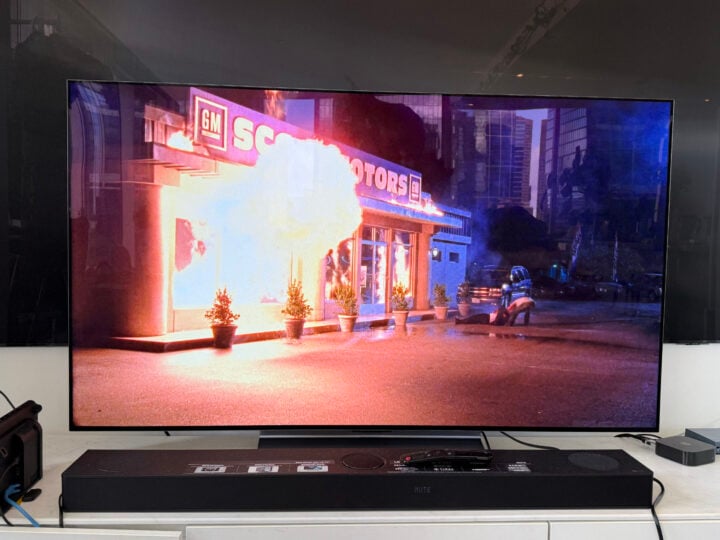
After all that, my first thought when using the TV was something along the lines of “ooh, pretty!” Because wow, LG OLED TVs remain super pretty.
LG C5 OLED TV specifications and price
| Model name | OLED55CPSA |
| Size reviewed | 55-inch |
| Price (RRP) | $3,299 (55-inch) |
| Display type and resolution | 4K OLED |
| Refresh rate | 120Hz Native (VRR 144Hz) |
| Picture Processor | A9 AI Processor 4K Gen8 |
| Inputs | 4 x HDMI 2.1 (incl 1 x eARC) Ethernet Bluetooth 5.3 SPDIF RF input 3 x USB 2.0 Wi-Fi 6 |
| Operating System | WebOS 25 |
| Warranty | 2 years (in addition to your Australian Consumer Law rights) |
| Official website | LG Australia |
If you’re reading this and thinking, “wow, that is super similar to the C4”, first of all, congratulations on having an excellent memory. Second of all, that’s because on paper, they are very similar.
The big call-outs are that the C5 has gone all in on AI (with mixed results), has a slightly faster processor, and is a bit brighter.
More importantly, when compared to TVs in general and not just the C4, the C5 has four HDMI 2.1 inputs, it has support for all major HDR formats (more than most other brands, which usually choose an allegiance), and a remote with a motion-controlled cursor. That last feature is something you either love or hate.
General viewing
The big thing with OLED TVs is, of course, black levels. Because of the way the light is controlled by individual pixels, OLED TVs are capable of much blacker blacks than other technologies. This shows so well with dark scenes, those set at night or in space.
In the David Attenborough Ocean documentary, the darker ocean scenes just popped. The contrast was perfectly stark, highlighting the mysteries of the deep and the tragedy of trawling. The details stand out so clearly.
In the bright scenes, the colours of the fish are vibrant, the water looks inviting, and the undersea world comes alive. The motion was fluid (pun intended).
The only hiccup was with the white subtitles on the black background — there was some noticeable halo effect, which I was quite surprised to see so obviously on an OLED TV.
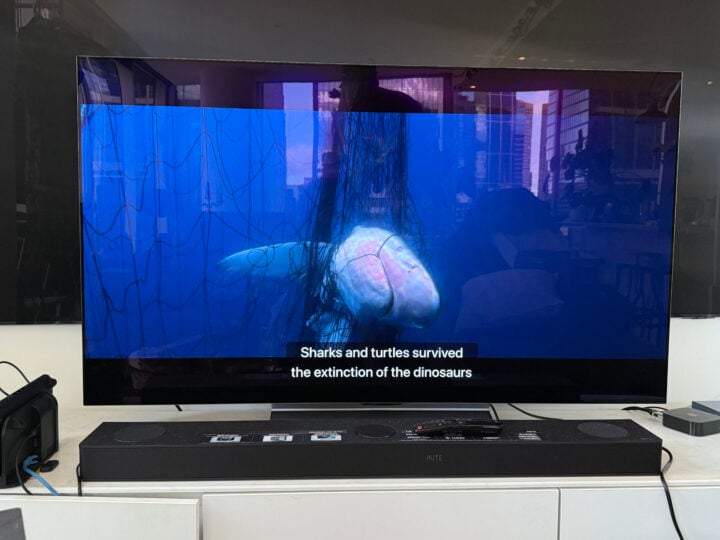
On older content, the upscaling does an excellent job, making old episodes of One Tree Hill look Full HD or better. The colours popped, the edges were well defined, it was less fuzzy than I’ve noticed on some other, less fancy TVs, with almost no artefacts, and nothing got in the way of the ridiculous teen drama. It’s very impressive for AI upscaling.
While there is some motion smoothing turned on by default, I was shocked that I didn’t feel the need to adjust it, because it didn’t look weird. What sorcery was this?
Watching basketball, the ball movement was clean and easy to track. It’s an excellent TV for sports.
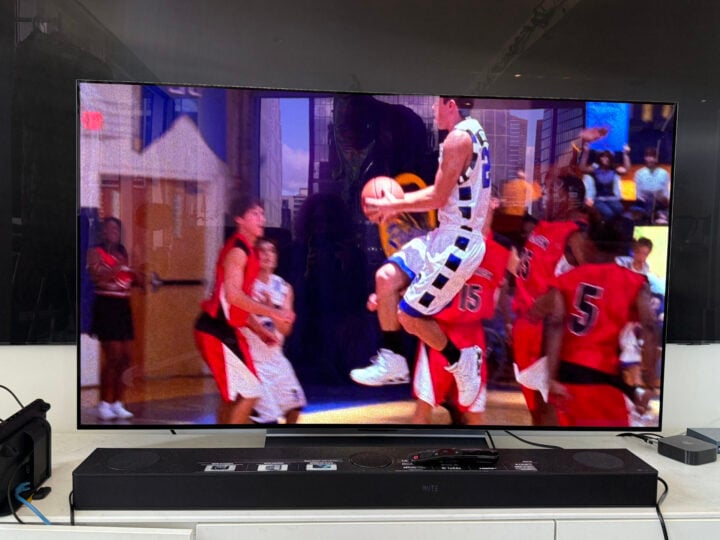
There really wasn’t any content I could throw at this TV that it didn’t excel at.
However, on a bright day in my apartment that’s essentially a glass house, things went a little south. While the reflections didn’t look as bad in person as they do in this photo, it still wasn’t great. OLED isn’t as constrained by the general concept of the sun as it used to be, but it still struggles against brighter TV technologies, such as Mini LED.
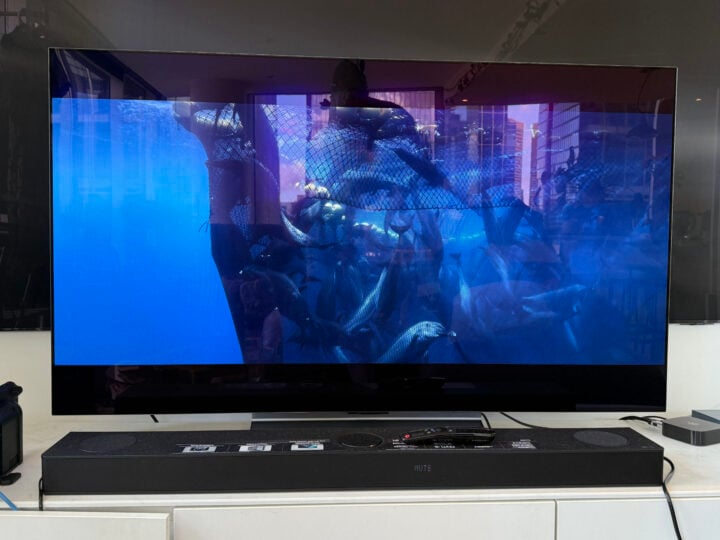
Gaming
What a pleasure it is to play games on the LG OLED C5. Smooth motion, excellent HDR, and a gaming dashboard that gives easy access to info and settings.
I spent a lot of time playing Fortnite, Forza Horizon 5, Mario Party Jamboree, Donkey Kong Bananza and other games across Nintendo Switch 2, PS5 Pro and Xbox Series X. I was impressed by the depth of colour, reasonably high brightness for HDR, and the commitment to maintaining 120fps when possible. The C5 is also compatible with 144Hz, but I was unable to test that.
While the input lag of around 13ms isn’t as good as some fancier, more expensive TVs, it sits nicely in the average range you’d expect for this price bracket.
Remote
For some reason, the old, beautifully ergonomic Magic Remote drew a lot of hate from people who hate joy and comfort (Editor’s note: it’s me. I hate joy and comfort.). I loved that old remote. It had everything you needed and was delightful to hold. The motion controls are weird, but also delightful and useful.
This year, LG changed up the remote design to a more traditional candy bar shape that is uncomfortable to hold and lacks whimsy. It does still have the motion-controlled cursor, but the new body shape makes it uncomfortable to wield.
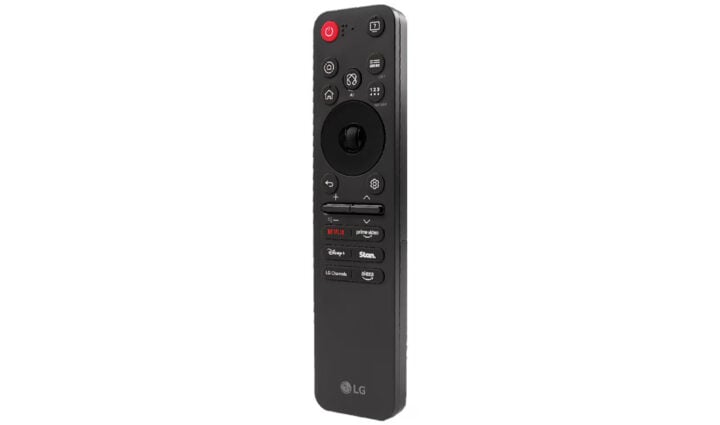
What is unforgivable, though, is that they replaced the ‘change input’ button with an AI button, so now it takes a bunch of extra clicks to switch to the Xbox or whatever through the home screen. It ensures you get to look at ads along the way, which I’m sure is just a happy accident.
What’s worse is that the AI assistant doesn’t seem to understand Australian accents. I have to put on an American accent just to get it to understand what I’ve said, and even then, it doesn’t return any genuinely useful results.
Audio
The speakers in this TV make my ears sad. It’s not LG’s fault, it’s the nature of thin TVs — there just isn’t enough room in the TV’s body for air to move. If you want a thin TV to sound good, you need to get a soundbar with it.
I tried the $1,699 LG S95TR soundbar that comes with rear speakers along with the LG C5 OLED TV, and it’s pretty good. Quite often, the soundbar would mute itself at random, and the subwoofer would try to take over all the audio duties, which sounded both bad and hilarious. But when it worked, the Dolby Atmos effect was solid, and audio placement was where I’d expect.
It’s a solid step above entry-level surround sound systems, and the inclusion of rear speakers and a subwoofer means it’s automatically better than any standalone soundbar in its price range.
Who is the LG C5 OLED TV for?
This is the TV for people who want an OLED TV that features both HDR10 and Dolby Vision without springing for G5 prices.
LG is no longer the default choice for OLED, given there are so many other strong players in the market. But the C5 is such a good proposition at this price point that it’s worth exploring for anyone who has a living room that isn’t too bright.
The post LG C5 OLED TV review: Beautiful TV with an AI-infused remote appeared first on GadgetGuy.



0 (mga) komento:
Mag-post ng isang Komento